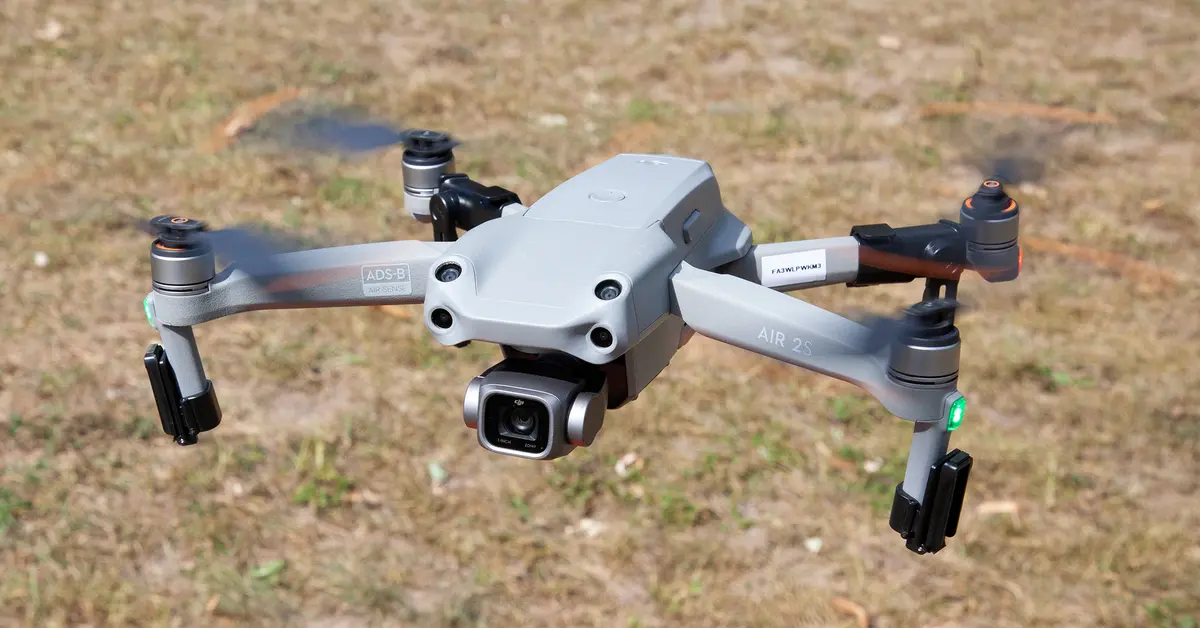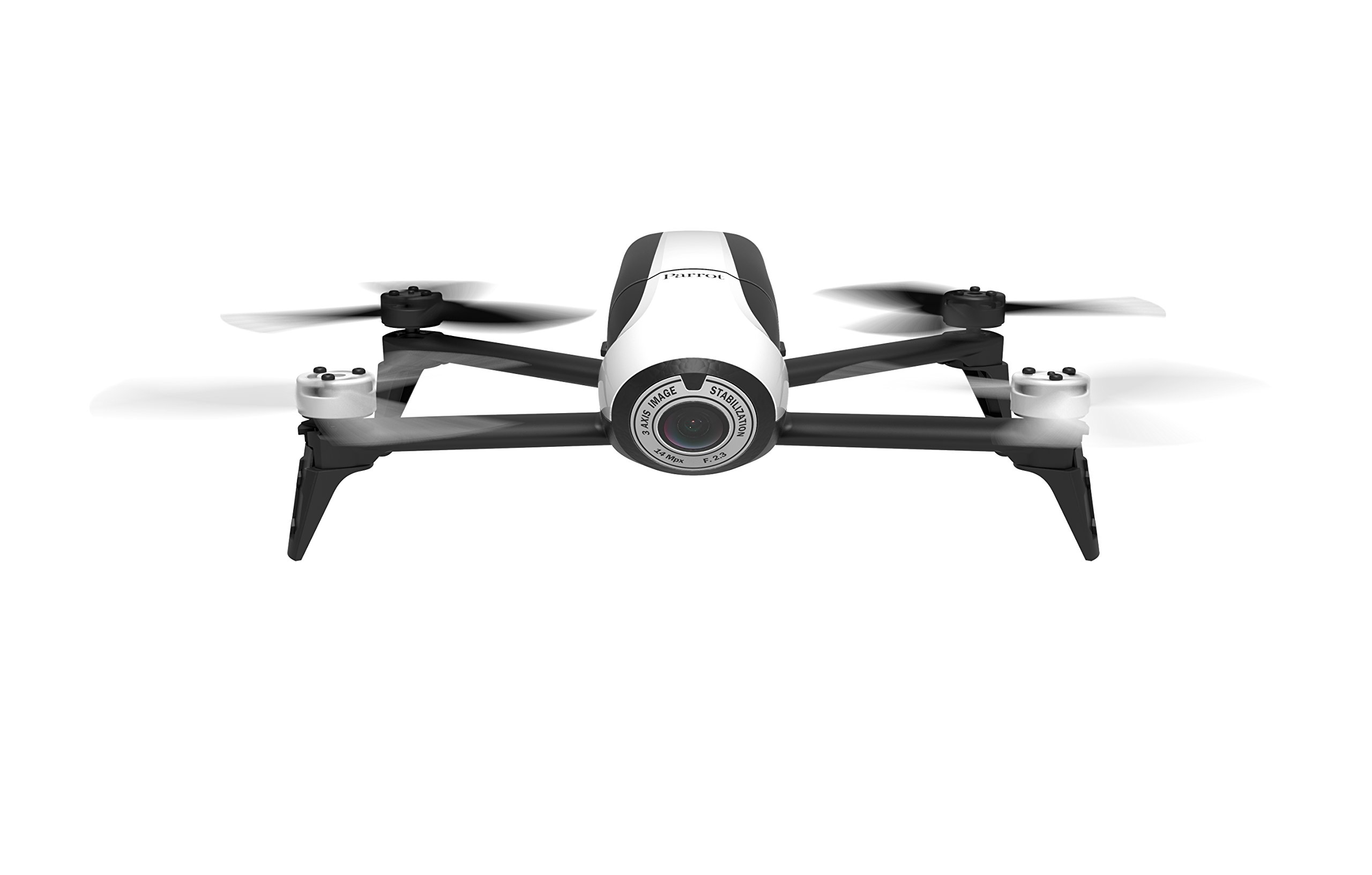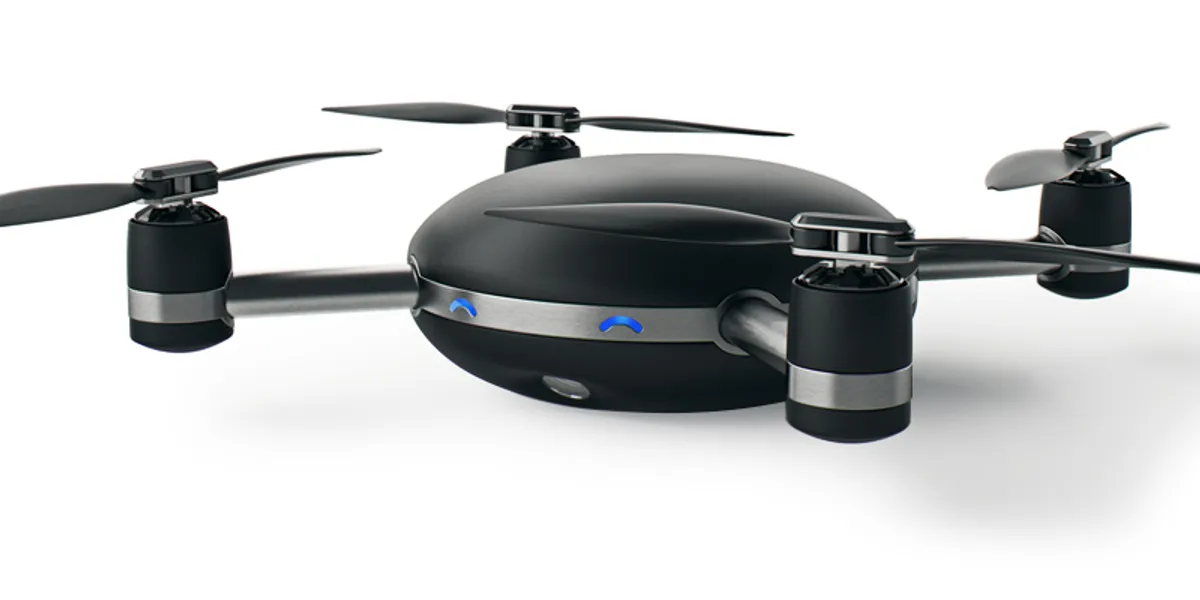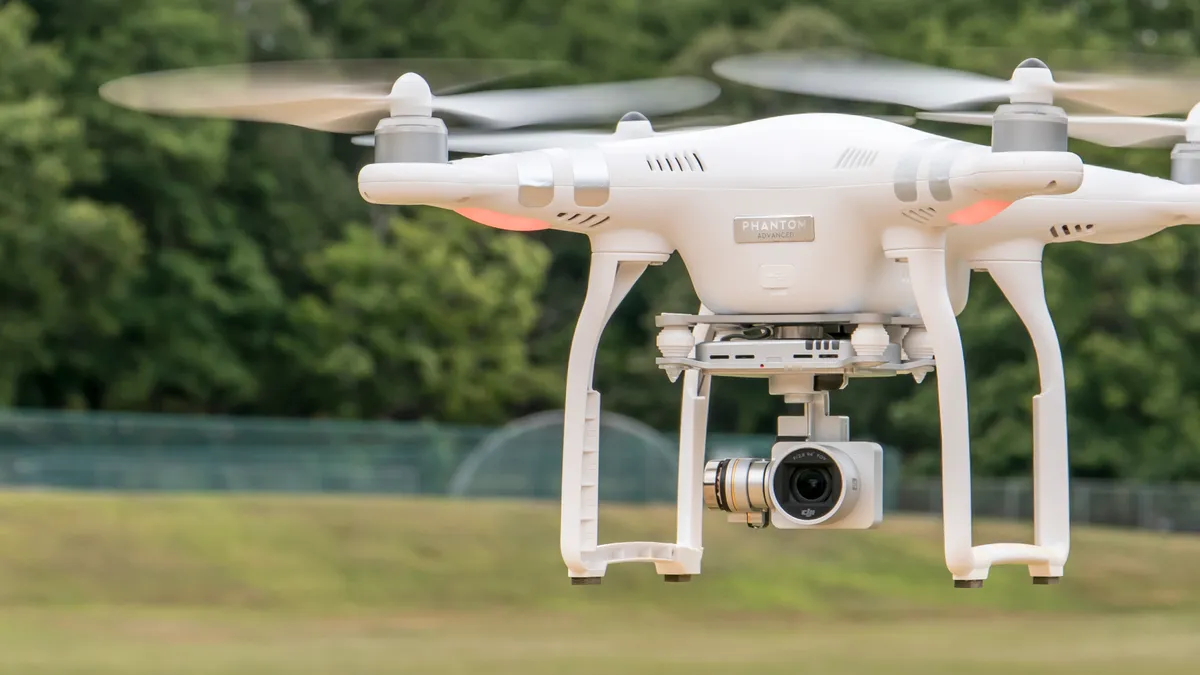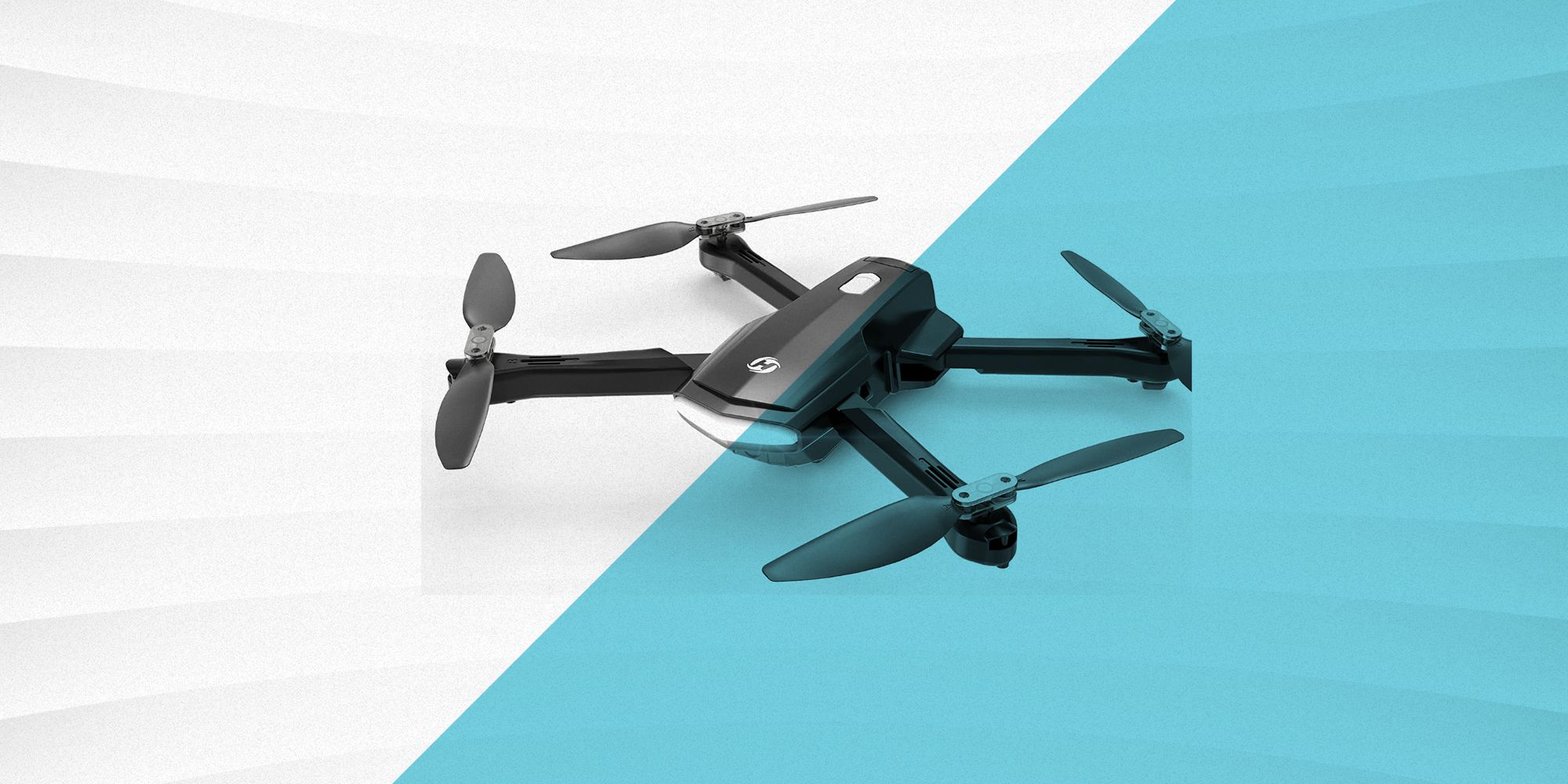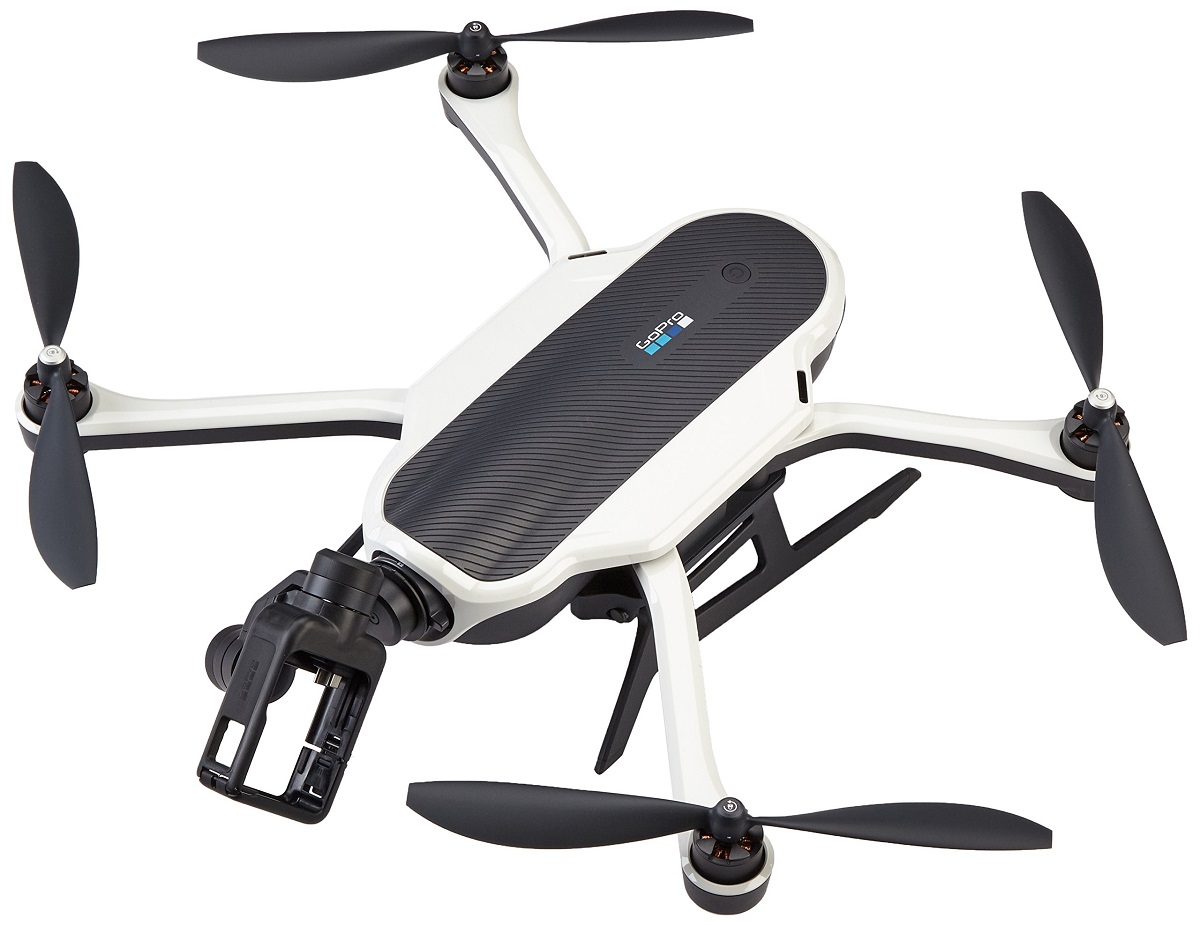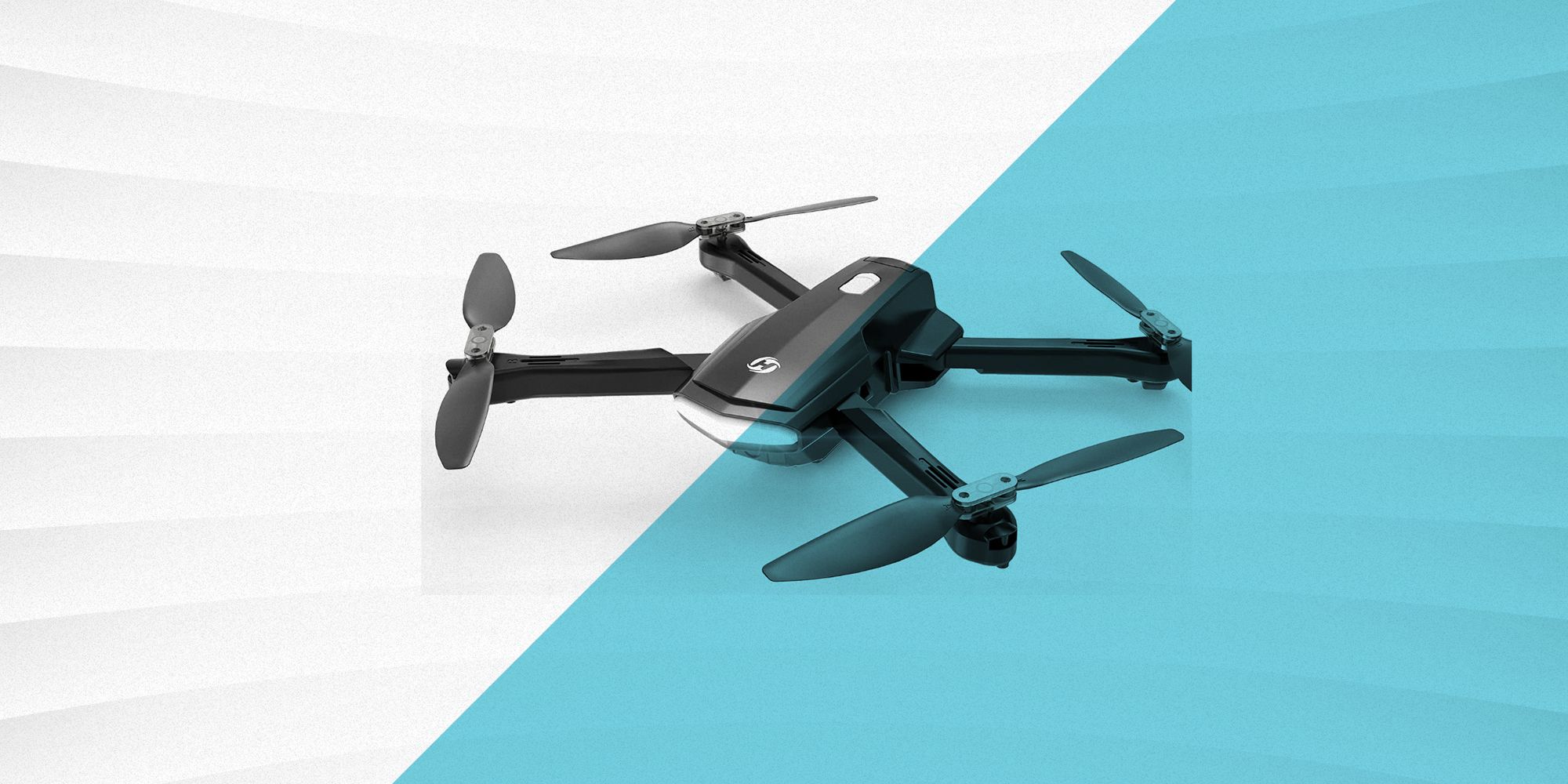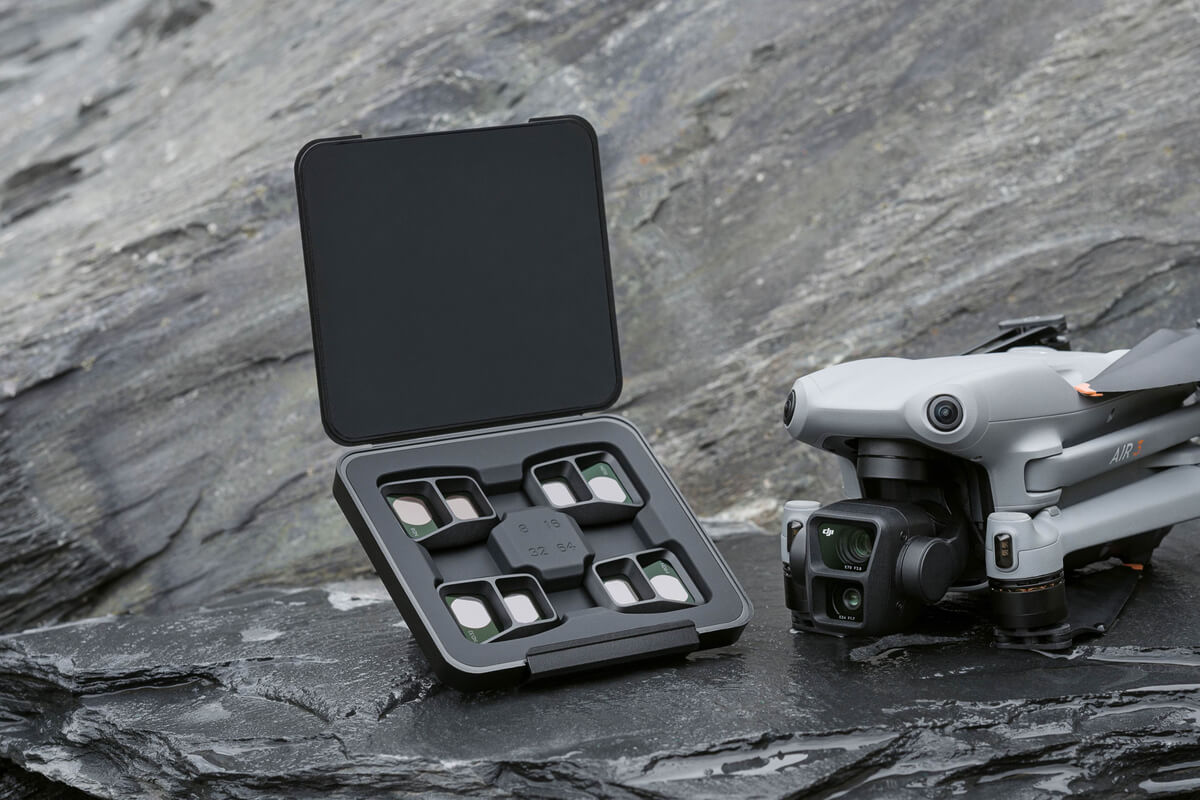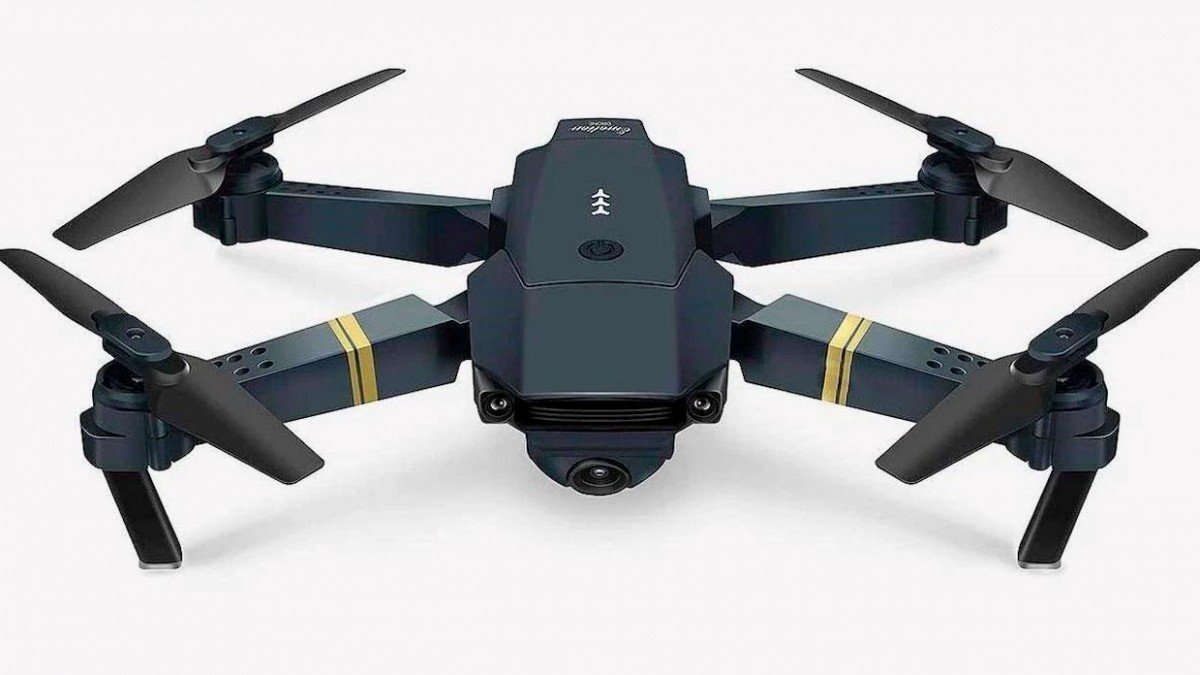Introduction
Welcome to the exciting world of drones! Whether you are a photography enthusiast, an aspiring filmmaker, or simply someone who enjoys the thrill of remote-controlled gadgets, buying a drone can be a game-changer. Drones have become increasingly popular over the years, offering a wide range of features and capabilities that cater to various needs and interests.
However, with a wide array of options available in the market, it can be overwhelming to choose the right drone that suits your requirements and budget. That’s where this guide comes in. In this article, we will discuss the key factors you should consider when buying a drone, to ensure that you make an informed decision and get the most out of your purchase.
Before diving into the details, it’s important to understand that drones come in various shapes, sizes, and price ranges. From compact mini-drones that fit in your pocket to professional-grade drones capable of capturing stunning aerial footage, there is a drone for every level of expertise and budget.
When buying a drone, it’s crucial to identify your specific needs and intended use. Are you buying a drone for recreational purposes, or do you have professional goals in mind? Do you plan to use it for aerial photography or videography, or do you simply want to enjoy the thrill of flying? Answering these questions will help you narrow down your options and make a more targeted decision.
Now, let’s delve into the factors you should consider when buying a drone. By considering these aspects, you can confidently choose a drone that meets your needs and offers an enjoyable flying experience.
Price
When it comes to buying a drone, one of the primary considerations is the price. Drones are available in a wide range of price points, ranging from affordable entry-level options to high-end professional drones with advanced features. It’s essential to determine your budget and find a drone that offers a balance between price and features that aligns with your needs.
For those just starting out or looking for a recreational drone, there are plenty of budget-friendly options available. These drones often come with basic features and may have limitations in terms of flight time, camera quality, and range. However, they can still provide an enjoyable flying experience and are a good choice for beginners.
On the other hand, if you have specific requirements such as aerial photography or videography, you may need to invest in a higher-priced drone with better camera capabilities and advanced flight functions. These drones typically offer higher image quality, stability, and longer flight times.
It’s worth considering that drones at the higher end of the price spectrum often come with additional features such as obstacle avoidance systems, GPS navigation, and follow-me modes. These features can enhance the overall user experience and make flying safer and easier.
However, it’s important to strike a balance between your budget and the features you need. Spending more money on a drone doesn’t necessarily mean it will be the best choice for you. Assess your specific needs and prioritize the features that are most important to you. It’s better to invest in a drone that meets your requirements and offers good value for money.
Lastly, keep in mind that the price of a drone doesn’t end once you make the purchase. Additional costs may include spare batteries, memory cards, carrying cases, and accessories. Consider these expenses as part of your budget and factor them into your decision-making process.
Flight time
Flight time is an essential factor to consider when buying a drone. Simply put, flight time refers to the duration the drone can stay in the air on a single battery charge. This is an important consideration as it directly impacts the amount of time you can spend flying and capturing footage.
Drones generally have varying flight times, with entry-level models typically offering around 10-15 minutes of flight time. More advanced and expensive drones can provide flight times of up to 30 minutes or even longer. It’s important to note, however, that flight time can be affected by factors such as wind conditions, flying style, payload, and overall battery health.
Before choosing a drone based on flight time, it’s crucial to assess your needs and how you plan to use the drone. If you intend to use it for recreational purposes or short aerial photography sessions, a drone with a lower flight time may be sufficient. However, if you have specific professional requirements or plan to capture more extended footage, opt for a drone with a longer flight time.
Keep in mind that longer flight times often come with higher-priced drones that have larger and more powerful batteries. Additionally, some drones offer the option to swap out batteries, allowing you to extend your flight time by carrying extra batteries with you.
Another consideration related to flight time is the charging time of the drone’s battery. Some drones take longer to charge fully, which can limit the amount of time you have available for flying. It’s worth considering whether the drone comes with extra batteries and how long it takes to charge them.
To ensure that you make the most of your drone’s flight time, it’s recommended to plan your flights in advance, charge your batteries fully, and carry spare batteries if possible. This way, you can maximize your time in the air and capture the footage you desire.
Camera Quality
For many drone enthusiasts, the camera is a crucial aspect to consider when making a purchase. The camera quality plays a significant role in the overall value and functionality of the drone, particularly if you are interested in aerial photography or videography.
When assessing camera quality, there are a few key factors to consider:
Resolution: The resolution refers to the number of pixels the camera can capture. Higher resolutions, such as 4K or even 8K, offer greater clarity and detail in captured footage. However, it’s essential to note that higher resolution often requires more storage space for the footage and can limit the drone’s flight time due to increased processing requirements.
Stabilization: A good camera should have built-in stabilization features to minimize camera shake and ensure smooth footage, even in windy conditions or during fast movements. Look for drones with features like gimbal stabilization, which provides a more stable platform for the camera.
Field of view: The field of view (FOV) refers to the extent of the scene that can be captured by the camera. A wider FOV allows you to capture more of the surroundings, while a narrower FOV may be preferable for specific types of photography, such as zooming in on a subject.
Adjustability: Ideally, the drone’s camera should offer adjustable settings, enabling you to control aspects such as exposure, shutter speed, ISO, and white balance. This level of control allows you to customize your footage and capture the desired aesthetic.
In addition to these factors, it’s worth considering the image and video formats supported by the drone’s camera. Some drones offer the option to shoot in RAW or DNG formats, which allow for more post-processing flexibility and better image quality.
Ultimately, the camera quality you need depends on your specific requirements and the level of quality you desire in your footage. If you are a professional photographer or videographer, investing in a drone with a high-quality camera is recommended. However, if you are a recreational user or just starting out, a drone with a decent camera that captures good-quality footage may be sufficient.
Don’t forget to research and read reviews to gain a better understanding of the camera’s performance in different lighting conditions and its overall image quality. This will help you make an informed decision and choose a drone that meets your expectations in terms of camera capabilities.
Flight Modes and Features
Flight modes and features are important considerations when buying a drone, as they determine the capabilities and versatility of the aircraft. These modes and features enhance the flying experience and allow you to capture unique and creative shots. Here are some common flight modes and features to look out for:
GPS and Return-to-Home: Drones equipped with GPS capabilities can automatically lock onto satellites for increased stability and positioning accuracy. The Return-to-Home feature allows the drone to fly back to its takeoff point at the push of a button or in cases of low battery or lost signal, ensuring the safe return of the aircraft.
Follow Me: This feature enables the drone to track and follow a specific subject, whether it be a person, vehicle, or other objects. This is especially useful for capturing dynamic footage without having to manually control the drone’s movements.
Waypoint Navigation: With waypoint navigation, you can plot a flight path by specifying designated points on a map. The drone will then autonomously fly along the specified waypoints, allowing for pre-planned and repeatable flights.
Obstacle Avoidance: Drones equipped with obstacle avoidance systems use sensors to detect and avoid obstacles in their flight path. This feature adds an extra layer of safety, helping to prevent collisions and damage to the drone.
Altitude Hold: Altitude hold mode allows the drone to maintain a constant altitude without input from the pilot. This can be useful when capturing steady footage or when using the drone for aerial inspections.
Gesture Control: Some drones offer gesture control capabilities, allowing you to control the drone’s movements using hand gestures. This can be a fun and intuitive way to interact with the drone, especially for capturing selfies or group photos.
Sport Mode: Sport mode enables the drone to fly at higher speeds, providing a more exhilarating and dynamic flying experience. This mode is ideal for drone racing or for capturing fast-paced action shots.
These are just a few examples of the flight modes and features available in drones. The specific features you choose will depend on your interests, intended use, and level of expertise. Consider how these features can enhance your flying experience and capture capabilities to help you select a drone that meets your needs.
Range and Signal Strength
When purchasing a drone, it’s crucial to consider the range and signal strength it offers. These factors play a significant role in determining how far and reliably you can control your drone.
Range refers to the maximum distance between the drone and the controller at which they can maintain a stable and responsive connection. It’s essential to choose a drone with a range that suits your intended use. If you plan to use the drone for long-distance flights or capturing footage from a considerable distance, a drone with a longer range is recommended.
The signal strength of the drone is closely related to its range. A strong and stable signal ensures that the drone remains responsive to control inputs and maintains a steady connection with the controller. Weak signal strength can result in lag or even loss of control, which can be detrimental to the flying experience and potentially lead to accidents.
Several factors can affect the range and signal strength of a drone. These include environmental conditions, interference from other devices or structures, and the presence of obstacles such as trees or buildings. It’s essential to consider these factors and evaluate the drone’s capabilities accordingly.
It’s worth noting that different drone models offer varying range and signal strength. Entry-level and budget-friendly drones often have shorter ranges compared to high-end models. If you require an extended range or plan to fly in areas with potential signal interference, investing in a drone with advanced signal transmission technology, such as OcuSync or Lightbridge, may be beneficial.
Additionally, some drones offer features like a signal loss return-to-home, which automatically brings the drone back to its takeoff point if the signal is lost. This can provide an added layer of safety and help avoid losing your drone due to a weak or interrupted connection.
Ultimately, the range and signal strength you need will depend on your flying goals and the environments in which you plan to operate the drone. It’s important to assess your requirements and choose a drone that offers a reliable and robust connection for your desired range and signal strength needs.
Size and Portability
The size and portability of a drone are important factors to consider, especially if you plan to take your drone on the go or travel with it frequently. Drones come in a variety of sizes, ranging from compact and foldable models to larger, professional-grade drones.
If you value portability and ease of transportation, opting for a smaller and more portable drone is recommended. These drones are typically lightweight and compact, making them easy to carry in a backpack or small case. They are ideal for those who want to take their drone on hikes, vacations, or any adventure where space is limited.
On the other hand, larger drones often offer more advanced features and better camera capabilities. These drones are bulkier and may require a dedicated carrying case or backpack. They are suitable for individuals who prioritize high-quality footage and have the means to transport them securely.
While considering the size of the drone, it’s also important to think about the type of flying you plan to do. If you intend to fly in urban areas or crowded spaces, a smaller drone may be more maneuverable and less intrusive. Conversely, if you plan to fly in open spaces with fewer obstacles, a larger drone may offer better stability and longer flight times.
Another aspect related to portability is the ease of set up and assembly of the drone. Some drones come ready-to-fly out of the box, while others require some assembly and calibration. If convenience and quick deployment are important to you, choose a drone that is easy to set up and start flying.
Keep in mind that while smaller drones are generally more portable, they may have limitations in terms of battery life, camera quality, and stability during stronger winds. It’s important to find a balance between portability and performance that aligns with your specific needs and preferences.
Ultimately, the size and portability of the drone should complement your lifestyle and flying goals. Assess your priorities and choose a drone that is compact and easily transportable for your desired level of convenience and mobility.
Battery Life and Charging Time
Battery life and charging time are crucial factors to consider when buying a drone. The battery life determines how long the drone can stay in the air on a single charge, while the charging time indicates how long it takes for the battery to recharge fully.
Drone battery life can vary depending on factors such as the drone’s size, weight, and power requirements. Entry-level drones typically offer around 10-15 minutes of flight time, while more advanced drones can provide flight times of up to 30 minutes or longer. It’s important to note that flight time can be affected by external factors such as wind conditions and the payload carried by the drone.
If you plan to use your drone for extended flights or activities that require longer flight times, investing in a drone with a higher-capacity battery is recommended. Some drones also offer the option to purchase additional batteries, allowing you to swap them out and extend your flying time without having to wait for the battery to recharge.
Charging time is another important consideration. Some drones may take an hour or more to fully charge, while others can charge significantly faster. It’s important to take into account the charging time to ensure optimal usage of the drone.
To make the most of your drone’s battery life, it’s recommended to fully charge the battery before each flight and avoid over-discharging the battery. It’s also helpful to carry spare batteries or a portable charger if you plan to fly for an extended period without access to a power source.
Additionally, consider the charging options available for the drone’s battery. Some drones come with dedicated charging cables or charging hubs, while others can be charged using a standard USB cable or power adapter. Understanding the charging options and requirements will ensure that you have the necessary equipment to keep your batteries charged and ready for flight.
Lastly, it’s essential to follow the manufacturer’s guidelines for battery care and maintenance. Proper usage and storage of the batteries can prolong their lifespan and ensure their optimal performance. Regularly inspect the batteries for any damage or signs of wear and replace them if necessary.
By considering the battery life and charging time, you’ll be able to plan and prepare for your drone flights effectively and get the most out of your flying experience.
Controller Options
When buying a drone, it’s important to consider the controller options that come with the drone. The controller is the primary device you use to control and maneuver the drone, so it’s essential to choose one that is comfortable and suits your flying style.
Most drones come with a dedicated controller that is specifically designed to work with that particular model. These controllers typically have a range of buttons, joysticks, and switches that allow you to control the drone’s movement, camera angle, and various flight modes.
One important aspect to consider is the ergonomics of the controller. It should have a comfortable grip and be easy to hold for extended periods of time. This is especially important if you plan to fly the drone for long durations or engage in activities that require precise control, such as aerial photography or racing.
Another consideration is the layout and intuitiveness of the controller’s buttons and controls. The placement of buttons and joysticks should be ergonomic and allow for easy access and control. Some controllers also incorporate customizable buttons, allowing you to assign specific functions or flight modes to them for quick access.
Furthermore, some drones offer the option to control the drone through a smartphone or tablet app. This can be convenient if you prefer a more portable and versatile control option. However, it’s important to note that controlling the drone through a smartphone app may not offer the same level of precision and responsiveness as a dedicated controller.
Before finalizing your purchase, it’s a good idea to read reviews or try out the controller if possible. This will give you a better understanding of its build quality, functionality, and overall user experience. You may also consider looking for drones that are compatible with third-party controllers, as this can provide additional options and customization capabilities.
In addition to the controller itself, consider the range and signal strength of the controller. Ensure that it provides a reliable and responsive connection with the drone, allowing you to fly with confidence and control the drone precisely.
Ultimately, the controller options should align with your preference, flying style, and level of comfort. Choose a controller that feels natural and intuitive to you, enabling you to have a seamless and enjoyable flying experience.
Safety Features
Safety should always be a top priority when operating a drone. Luckily, many drones come equipped with a variety of safety features to help prevent accidents and ensure a safe flying experience for both the drone pilot and those around them. When purchasing a drone, consider the following safety features:
Obstacle Avoidance: Drones with obstacle avoidance systems use sensors to detect and avoid obstacles in their flight path. This feature can help prevent collisions with trees, buildings, or other objects, minimizing the risk of accidents and damage to the drone.
Return-to-Home (RTH): The Return-to-Home feature allows the drone to automatically fly back to its takeoff point with the push of a button or in cases of low battery or lost signal. This ensures the safe return of the drone and helps prevent it from getting lost or crashing due to a weak or interrupted connection.
Geofencing: Geofencing technology allows you to set virtual boundaries for your drone’s flight area. This prevents the drone from flying into restricted or no-fly zones, such as airports or government buildings. Geofencing can help you comply with local regulations and avoid potentially dangerous situations.
Emergency Landing: In critical situations, some drones come equipped with an emergency landing feature. This feature enables the drone to land safely in case of a system failure or other emergencies, reducing the risk of damage or injury.
Altitude and Range Limitations: Some drones allow you to set maximum altitude and range limits. This helps prevent the drone from flying too high or too far, ensuring that it remains within your sight and control at all times.
Low Battery Warnings: Many drones have low battery warning systems that alert you when the battery levels are getting low. This gives you ample time to safely land the drone and prevent it from crashing due to insufficient power.
Flight Restrictions and No-Fly Zones: Drones equipped with GPS technology can have built-in databases that provide information on restricted airspace, no-fly zones, and other flight restrictions. This helps you avoid flying in prohibited areas or violating local regulations.
These safety features are designed to enhance the overall safety of drone operations. However, it’s important to note that no safety feature is foolproof, and it’s still the responsibility of the pilot to operate the drone safely and responsibly, following all applicable laws and regulations.
Before flying your drone, take the time to familiarize yourself with the safety features, read the user manual carefully, and understand the local regulations and guidelines for drone operations in your area. By using these safety features effectively and adopting responsible flying practices, you can ensure a safe and enjoyable drone experience for yourself and those around you.
Warranty and Customer Support
When investing in a drone, it’s essential to consider the warranty and customer support provided by the manufacturer. A warranty provides you with peace of mind and protection against any manufacturing defects or malfunctions that may occur with your drone.
Most reputable drone manufacturers offer warranties of varying durations, typically ranging from 6 months to 1 year. The warranty covers repairs or replacements for any faulty components or workmanship issues during the specified period. It’s advisable to check the details of the warranty, including what is covered, any limitations or exclusions, and the process for making a warranty claim.
Furthermore, consider the customer support provided by the manufacturer. A reliable and responsive customer support team can be invaluable when facing technical issues or needing assistance with your drone. Look for manufacturers that offer multiple avenues of customer support, such as phone, email, or online chat, and ensure that their support hours align with your availability.
In addition to the manufacturer’s warranty, consider if there are options for extended warranty coverage. Some retailers or third-party companies offer extended warranty plans that can extend the coverage for a longer period. Evaluate the cost and benefits of these options to determine if they are worth considering for added protection.
When assessing the warranty and customer support, read reviews and gather feedback from other drone owners to understand the experiences others have had with the manufacturer’s customer service. Prompt and helpful customer support can make a significant difference in resolving any issues or concerns you may encounter with your drone.
Lastly, consider the availability and cost of spare parts and repairs. Accidents happen, and components can wear out over time. It’s important to evaluate the availability and cost of replacement parts, as well as the options for repairs, either through the manufacturer or authorized service centers.
A strong warranty and reliable customer support can provide you with added confidence when purchasing a drone. They ensure that you have assistance and protection in the event of any problems or issues that may arise during the ownership of your drone.
Conclusion
Choosing the right drone involves careful consideration of multiple factors. By evaluating the price, flight time, camera quality, flight modes and features, range and signal strength, size and portability, battery life and charging time, controller options, safety features, and warranty and customer support, you can make an informed decision that meets your specific needs and preferences.
Remember that higher-priced drones often offer more advanced features, better camera quality, and longer flight times. However, it’s crucial to strike a balance between your budget and the features you prioritize. Assess your intended use for the drone and prioritize the factors that align with your goals.
Additionally, prioritize safety when flying your drone. Familiarize yourself with local regulations, use safety features provided by the drone, and always fly responsibly. Ensure that you have the necessary knowledge and skills to operate the drone safely and avoid potential accidents.
Finally, be aware that the drone market is continuously evolving. New models are released frequently, offering enhanced features and capabilities. Stay updated with the latest advancements and technology to make informed decisions when upgrading or purchasing a new drone.
With careful consideration of these factors, you can choose a drone that fits your skill level, intended use, and budget. Whether you are a recreational drone pilot or a professional aerial photographer, finding the right drone will provide you with exciting opportunities for creativity, exploration, and capturing stunning aerial footage.







